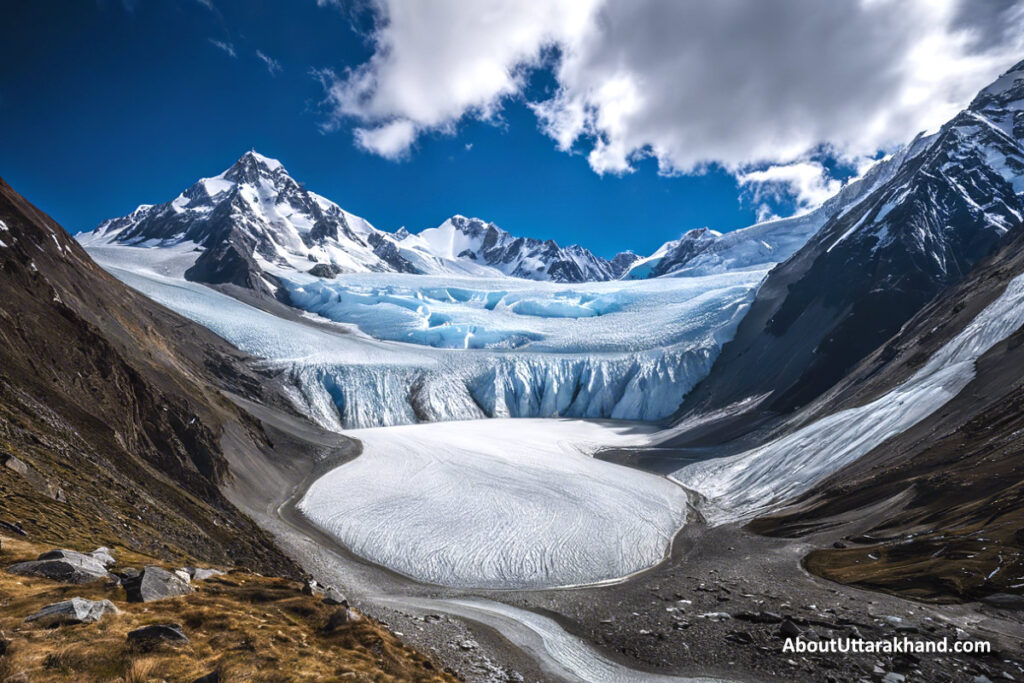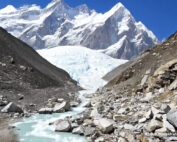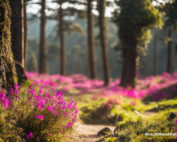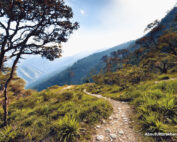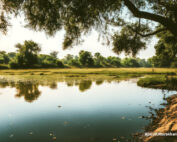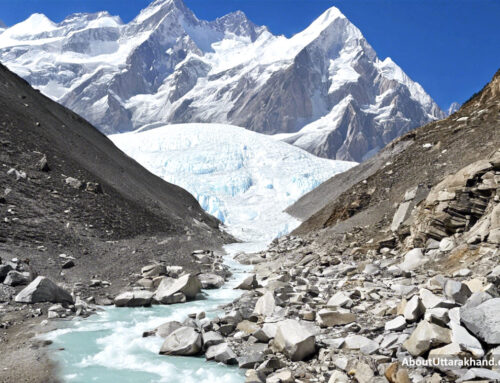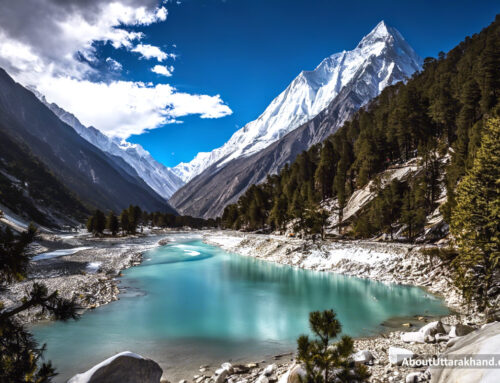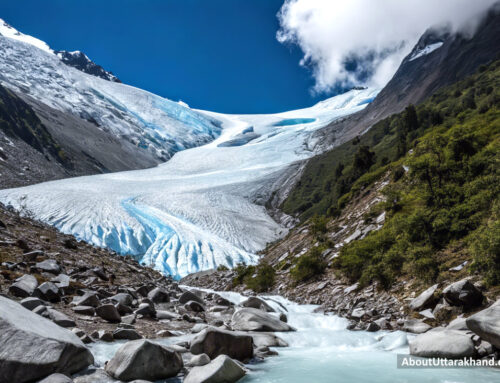Yamunotri Glacier
A destination of great spiritual importance and natural beauty, the Yamunotri Glacier may be found in the breathtaking Garhwal Himalayas of Uttarakhand, India. Pilgrims and tourists alike are drawn to this area since it is the starting point for the sacred Yamuna River. Although the glacier itself is seldom visited by visitors because of its difficult and inaccessible position, the journey to the Yamunotri Temple is a popular pilgrimage since it provides insight into the glacier's formation and the stunning scenery around it.
Table of Contents
Yamunotri GlacierDetails About Yamunotri Glacier
History Of Yamunotri Glacier
Best Time To Reach Yamunotri Glacier
How To Reach Yamunotri Glacier
Places To Visit Near Yamunotri Glacier
To Conclude

Yamunotri Glacier | Photo: AboutUttarakhand.com
Details About Yamunotri Glacier
Yamunotri Glacier, where the Yamuna River is said to have begun, has a profound spiritual significance in Hinduism. This holy site is visited by pilgrims on their way to the other three sites of the Char Dham Yatra: Gangotri, Kedarnath, and Badrinath. Travelers seeking spiritual renewal and divine favor bathe in the Yamuna River's icy waters at the Yamunotri Temple.
The glacier is a beautiful natural formation, a pure expanse of ice and snow that sits at an altitude of around 6,315 meters (20,700 feet) above sea level. Alpine meadows, thick woods, and rushing streams decorate the path to the glacier, providing a gorgeous environment that adds to the mystical feel of the area.
Although the Yamunotri Glacier is usually inaccessible to visitors owing to its difficult terrain and high altitude, the trip to the Yamunotri Temple is well worth the effort. Beginning at Hanuman Chatti, hikers will pass through scenic areas with views of towering mountains and peaceful valleys. Visitors go to the temple, where they may worship and see the glacier torrent that forms the Yamuna River, the river's origin.
The Yamunotri Temple is a major landmark for hikers to see. It's the main attraction of the journey and it's all in honor of the Goddess Yamuna. The architectural magnificence of the temple, set against the majestic Himalayas, enhances the trip's spiritual and aesthetic value.
Surya Kund and Gauri Kund are two of the most well-known of the natural hot springs in the area around the Yamunotri Temple. Before entering the temple, many pilgrims partake in a ceremonial bathing practice at one of these hot springs.
An opportunity to gain cultural understanding is presented by the journey to Yamunotri Glacier and Temple. Visiting these distant mountain communities and learning about the locals' traditional way of life, customs, and traditions may enrich a pilgrim's journey.
The Yamunotri Glacier and Temple Pilgrimage combine action with spirituality in a way that is hard to find. The trip is strenuous on the body and soul, allowing for introspection and a closer connection with the universe and the divine.
History Of Yamunotri Glacier
The Yamunotri Glacier in the Garhwal Himalayas of Uttarakhand, India, is a holy site for Hindus because of its association with the holy Yamuna River. It has deep roots in the mythology and folklore that have molded the culture of the area.
The Yamuna River, a significant waterway in India, originates in this glacier. Pilgrims travel great distances to Yamunotri, the birthplace of the Yamuna, to honor the river that, in Hindu mythology, is considered to be the Ganges' sister. Pilgrims take the journey to Yamunotri Glacier in the hopes of being cleansed and blessed by the glacier's frigid waters.
The melting glacier over time is a reminder of how fragile Himalayan ecosystems are owing to global warming. The evolution of the glacier illustrates how religion, nature, and human interaction are all intertwined. Following the paths to Yamunotri Glacier, pilgrims and trekkers become a part of a centuries-old story of spiritual devotion and respect for the holy river.
Best Time To Reach Yamunotri Glacier
Yamunotri Glacier: May through June and September through October are the best times to visit. The weather is usually nice enough for trekkers and tourists to visit the Yamunotri Temple during these times. During the warmer months, the snow melts and the route is clear, showcasing the area's natural splendor. Heavy rain, the risk of landslides, and difficult hiking conditions make the monsoon months (July and August) unsuitable. Pilgrims and hikers alike may enjoy the area's spiritual and natural beauty in peace throughout the spring and fall seasons.
How To Reach Yamunotri Glacier
| By Road |
To reach Yamunotri Glacier by road, you would need to travel to the town of Yamunotri in Uttarakhand. Yamunotri is well-connected by road to major cities in the region. From Yamunotri, you can start the trek to Yamunotri Glacier. |
| By Train |
The Dehradun Railway Station is the one that is the most convenient for getting to Yamunotri from a train. You can get to Yamunotri by hiring a taxi or taking a bus from Dehradun. Both options are available. |
| By Air |
Jolly Grant Airport in Dehradun is the location of the airport that is geographically closest to Yamunotri. To get to Yamunotri from the airport, you can either rent a taxi or take a bus to get there. |
Places To Visit Near Yamunotri Glacier
To Conclude
In conclusion, the Yamunotri Glacier is of great religious importance in Hinduism since it is the location whence the holy Yamuna River flows. The journey to the Yamunotri Temple reveals the history of the glacier and displays the region's stunning scenery. People from all walks of life go out on treks and pilgrimages to the Himalayas in search of spiritual enlightenment, physical healing, and awe-inspiring scenery.
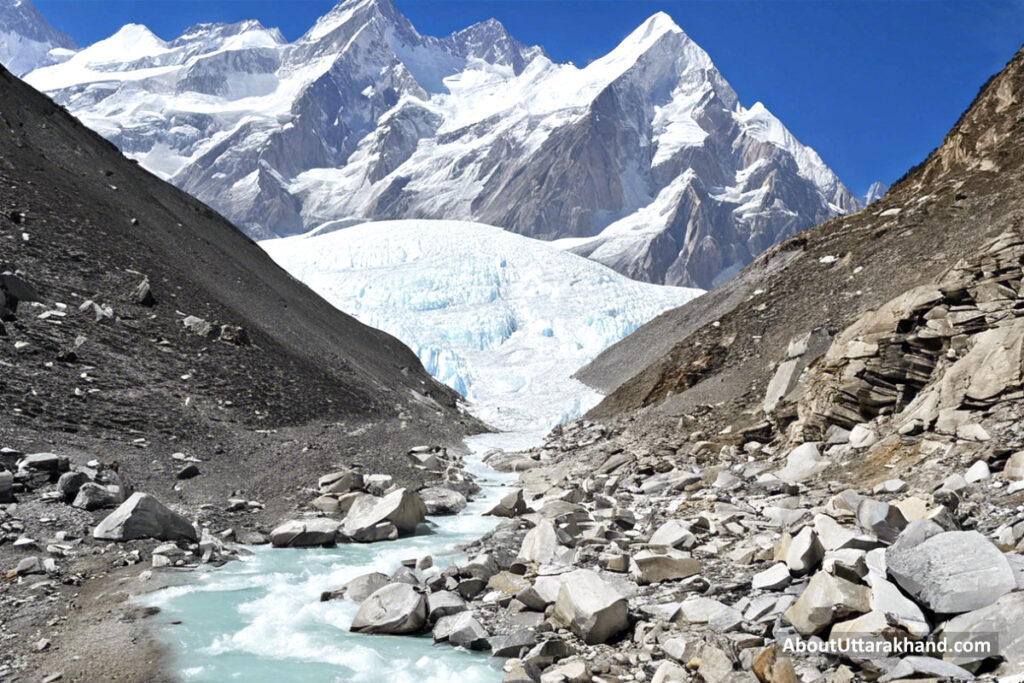
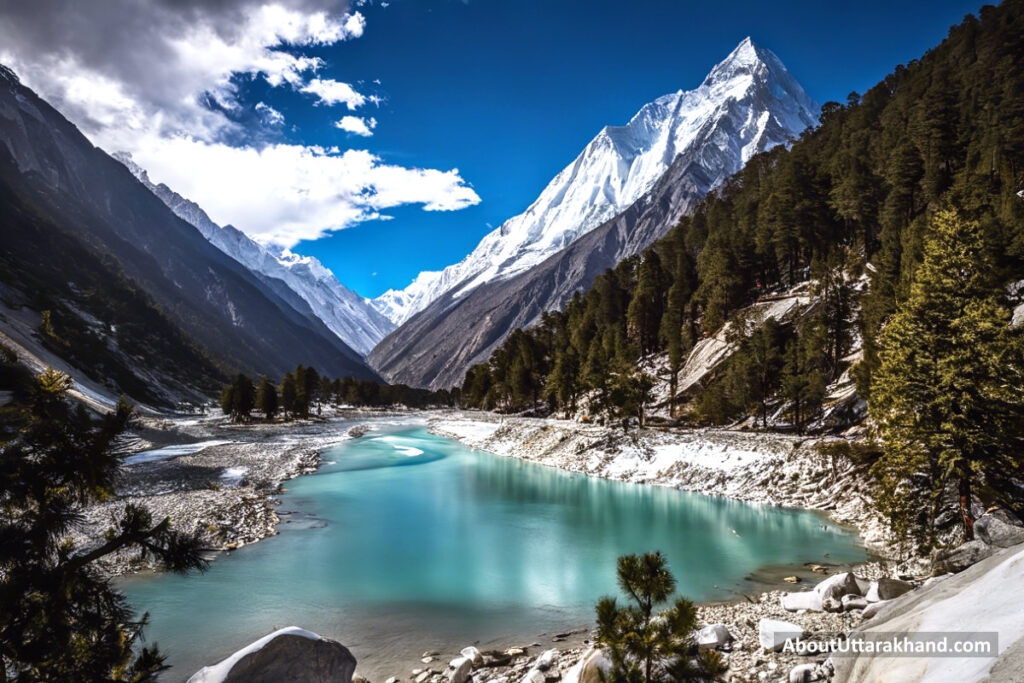


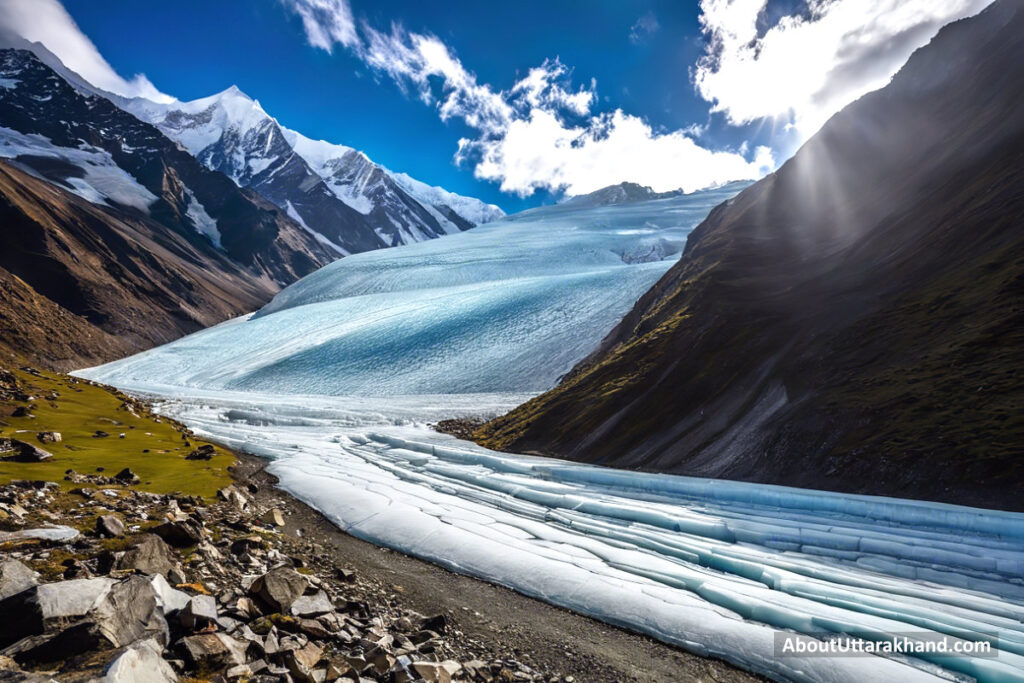

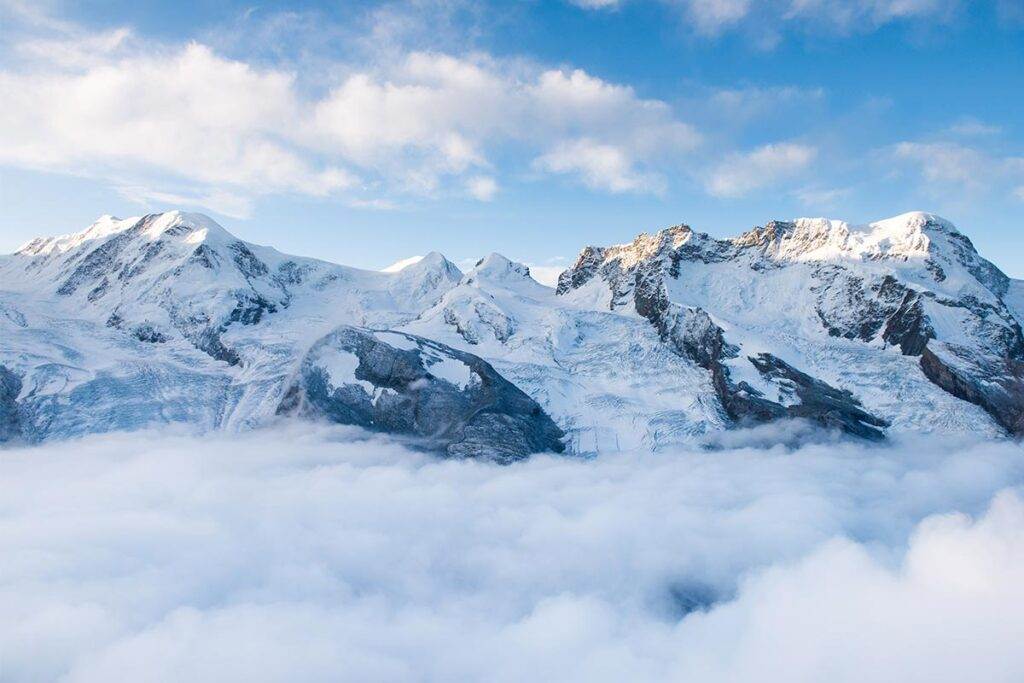
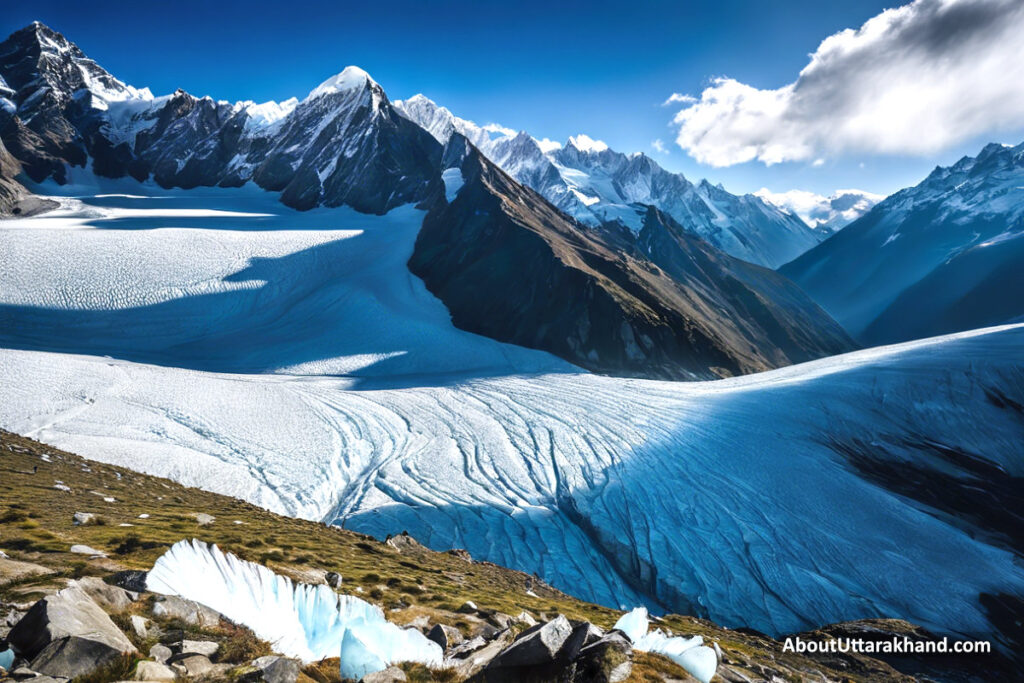

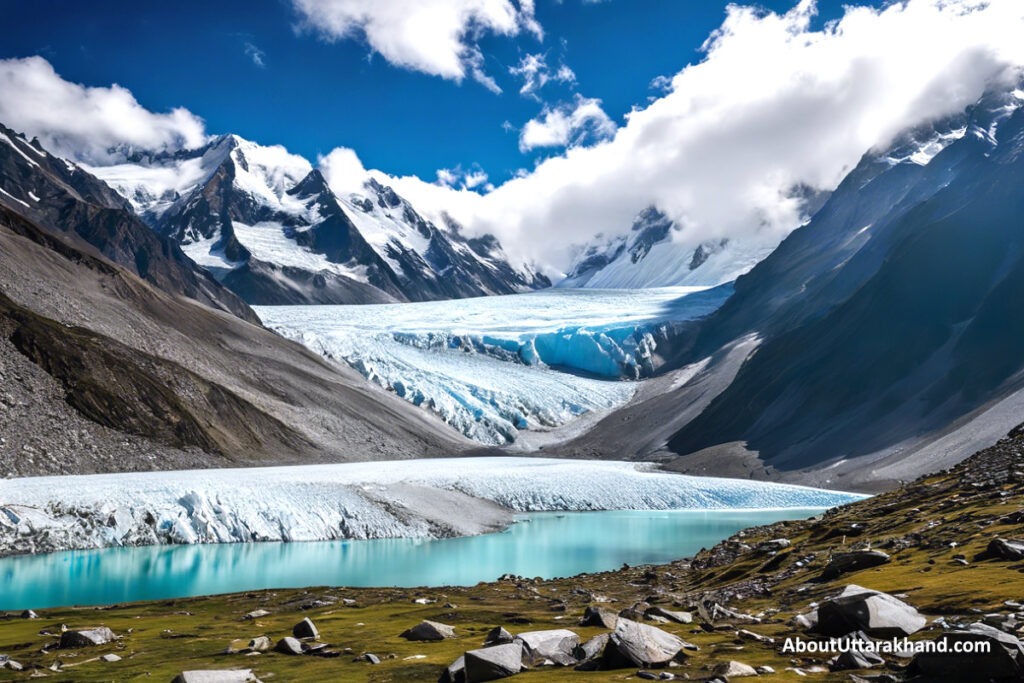
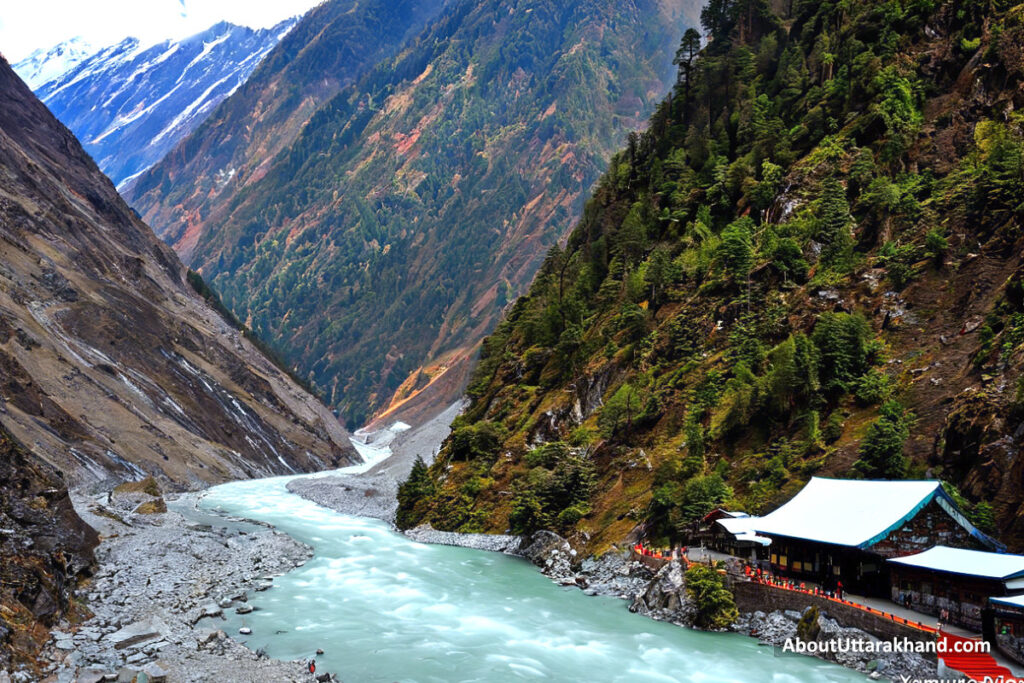

Belle Fable, keeps your trend ahead!
Gaumukh Glacier
The stunning Gaumukh Glacier, in the Uttarkashi region of Uttarakhand, India, is situated close to Gangotri and framed by the towering Garhwal Himalayas. Glaciers like this one attract tourists, hikers, and nature lovers from all over the globe because of the deep religious significance they have for Hindus as the headwaters of the holy Ganges River. The ascent to Gaumukh is an adventure in body and spirit, providing an opportunity to commune with the holy and the natural world.
Nandhaur Wildlife Sanctuary
The Nandhaur Wildlife Sanctuary is a haven for wildlife and stunning scenery, set in the tranquil hills of Uttarakhand. This sanctuary, in the Nainital District close to Haldwani, is a paradise for people who appreciate nature and animals. Its varied habitats, which include grasslands, ponds, and thick forests, have earned it recognition across its 269 square kilometers of territory.
Sonanadi Wildlife Sanctuary
The Sonanadi Wildlife Sanctuary invites animal lovers and nature lovers to come and enjoy the quiet beauty of Uttarakhand's serene surroundings. Hidden in the Nainital District, not far from Nainital, lies a refuge that begs to be discovered. Its varied wildlife and flora make this area, which covers around 301.18 square kilometers, a popular destination for ecotourists and those interested in biodiversity.
Binsar Wildlife Sanctuary
The Binsar Wildlife Sanctuary is a haven for wildlife and a monument to Uttarakhand's rich biodiversity, is situated in the picturesque Kumaon Himalayas. Nature lovers and wildlife aficionados will find this refuge, situated near Almora in the Almora District, to be a paradise. Covering about 47.04 square kilometers, it is famous for its verdant forests, varied fauna, and breathtaking views of the Himalayan mountains in the distance.
Tawaghat Wildlife Sanctuary
The Tawaghat Wildlife Sanctuary is a haven for adventurers and ecotourists, tucked away in the foothills of the towering Himalayas. This hidden gem of a sanctuary is located near Dharchula in Uttarakhand's Pithoragarh District. Despite its relatively tiny size (around 70 square km), this animal sanctuary is just as magical as any other.
Chilla Wildlife Sanctuary
.The Chilla Wildlife Sanctuary, located on the banks of the pure Ganges River, is a living monument to the beauty and variety of Uttarakhand's natural landscape. This sanctuary is a paradise for anyone who love nature and wildlife; it is located in the Pauri Garhwal District, close to Rishikesh. Covering over 249 square kilometers, it is a major wildlife sanctuary in the state that provides a peaceful haven amidst the majestic Himalayas.



